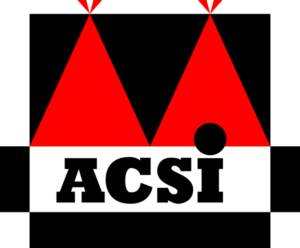Whichever Via Ferrata you choose, it’s sure to be a special experience. You’ll get to places you wouldn’t otherwise reach so quickly, and enjoy magnificent panoramic views. But above all, it’s a great challenge that lets you discover the beautiful Savoie region in a unique way.
Via Ferrata
The various via ferrata in the area will allow you to discover breathtaking landscapes!
Sports facilities around the campsite: Via ferrata around the campsite
When staying at a campsite, guests are actually surrounded by a wide range of possibilities. Free time can be filled in all sorts of ways. For example, you can go sailing, rowing, canoeing, fishing, diving, water skiing or wakeboarding on Lac du Bourget. You can also opt for spectacular rafting near Aime. Of course, you can also swim in the pool or in nearby Lac de Carouge. There’s something for cyclists of all levels.
This multi-faceted French department is known for its beautiful countryside and its many activities. Sports activities are available all year round. During the winter months, the ski resorts of the beautiful Alps attract many visitors, but in the other months, there are many other possibilities for holidaymakers.
Via Ferrata, a unique experience
Another special experience is the Via Ferrata. More and more people are coming to the Alps specifically to do this. In Savoie, and especially around the campsite, there are a number of via ferrata possibilities, also known as via ferrata. Via Ferrata literally means “iron road” in Italian. This is because the route taken on a via ferrata is secured by a steel cable. It’s an alternative and exciting way of reaching the most beautiful places in a reasonably easy and safe way, which you can’t reach on a normal mountain hike. It also gives you a breathtaking view of the landscape.
What to expect from Via Ferrata
On the Via Ferrata, there’s a steel cable to which you can attach yourself. So if you stumble, you hang on to the steel cable. Usually, on the Via Ferrata, there are also other devices that make the route easier. These include iron staircases, hooks and pins, suspension bridges and rope bridges. With these bridges, you can, for example, go from one mountain wall to another.
The story
The origins of Via Ferrata actually lie in the Dolomites. During the First World War, many battles took place in the mountains, and in order to guide soldiers as safely as possible across the mountains to take up a strategic position, steel cables were often attached to the mountain walls. Later, these were used for recreational purposes. The first lines were built in France in the 1990s. Whereas in the Dolomites, they are often located in the high mountains, in France they are more often close to tourist centers. These routes may be shorter, but are often spectacular in nature. The level of difficulty is determined by various factors. The degrees of difficulty of the routes are indicated from A (very easy) to E (very difficult).
Via Ferrata in Savoie
One example is the Via Ferrata Saix de Miolène. This tour has a difficulty level of D/E. The starting altitude is 1,030 meters and the final altitude is 1,250 meters. The starting point is La Chappelle d’Abondance, and the tour takes around one to two hours. In Annecy, for example, there’s a beautiful and easy Via Ferrata that lasts around three hours, where you can alternately walk, climb bars, abseil, zip-line and monkey bridge. This tour is suitable for beginners aged 12 and over. There are many different types of Via Ferrata in the area. Come and meet our service provider at the welcome drink on Sunday evening and plan to do this activity at least once. You’ll discover breathtaking scenery and go home with a lifetime of memories.
Make sure you're well prepared
As with other mountain sports, there are always risks. First of all, you always have to take the weather into account, so be well informed in advance of the weather forecast. You should always wear a helmet when climbing, not least because of stone chips. Always warn other climbers if stones fall. Take a good look at the level of the route and check whether you and your climbing companions can handle it. Always make sure you have a good map. For inexperienced climbers, it may be a good idea to go with a guide.






